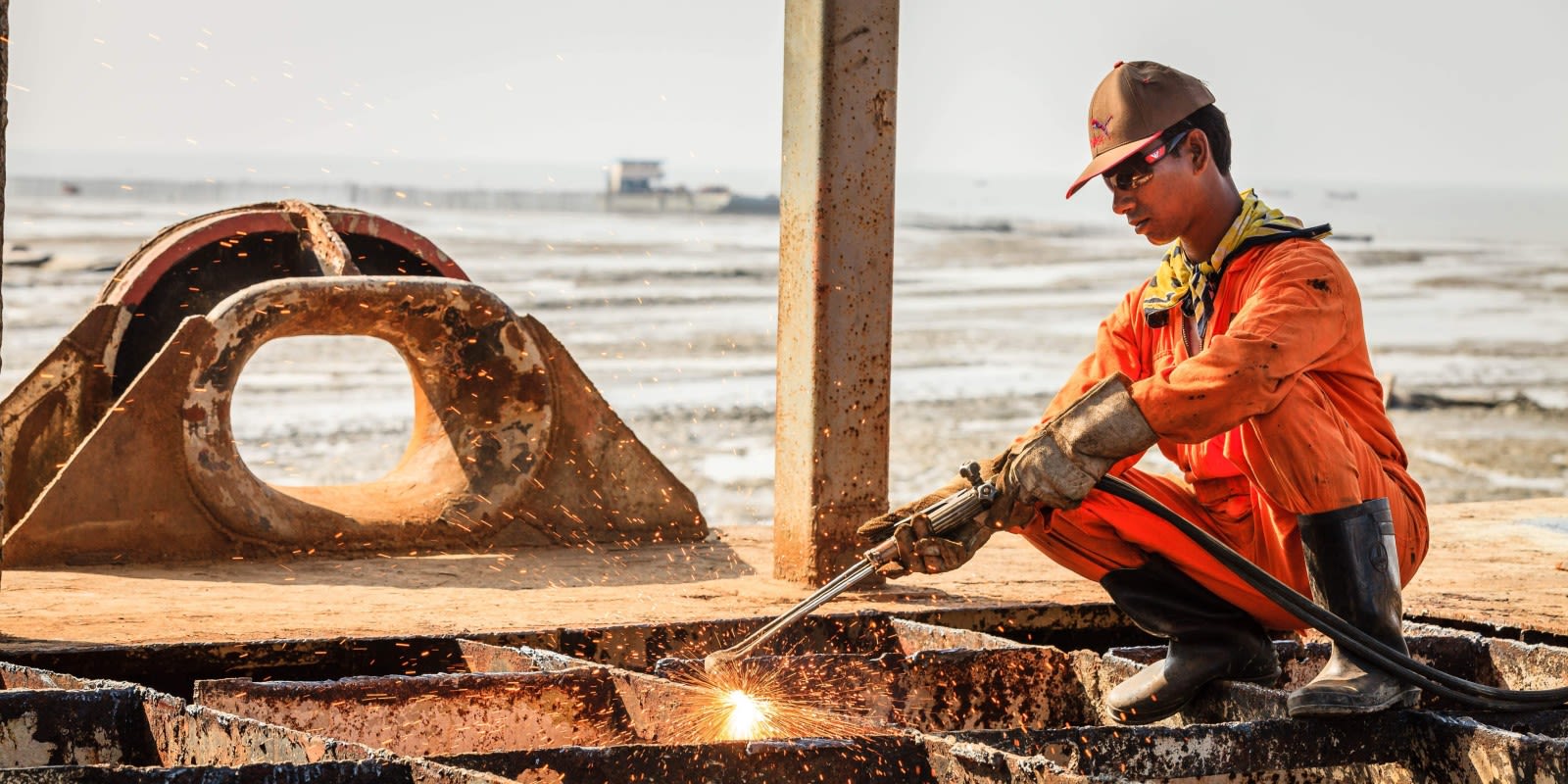
October 18, 2022
A Salvage Master’s Life: Saving Ships, Restoring Trade & Getting Paid
Tags:
Despite memes of the lone heroic excavator, actual maritime salvage crews spent days behind the scenes at the Suez Canal, joining forces to free the Ever Given. Their success allowed the return of daily trade flows worth up to $10 billion per day—that’s $7 million per minute—while captivating onlookers from every continent.
During this drama, at least a few people at home probably wondered about the day-to-day life of a maritime salvage master. As TikTokers revitalize the shanties of yore, we admit it’s tempting to throw your whole life overboard for an Aran-knit sweater and the promise of adventure.
We talk to Salvage Master David Stirling, a seasoned sea dog who has salvaged over 200 vessels since 1979, about what the tug life means to him.
So, You Want to be a Salvage Master?
The impulse to join a salvage crew is understandable. For centuries, madcaps and opportunists have taken to the sea.
As for Stirling, the tug life chose him, too. While in South Africa, the John Ross, one of the biggest tugboats in the world at that time, caught his eye. There was no turning back.
But tugboats don’t have to be big to get the job done. They just have to be powerful, yet agile enough to maneuver where needed. Salvage equipment is nothing short of bad-ass, though. Cranes, excavators, helicopters, drones, diving equipment, hydraulic pullers, and more make up heavy-duty tool kits.
To put it in perspective, to free the Ever Given, crews dredged enough sand and mud to fill a dozen Olympic pools. They deployed 18 tugboats in all directions. On top of their manuel efforts, they performed complex calculations, removed and transferred ballast, and timed the tides against the upcoming full moon.
Eventually, their tireless work spun a 1,312-foot long container ship—nearly as tall as the Empire State Building—off the banks of a canal that was only 985 feet wide at the site of the accident.
Plentiful Rewards, Unpredictable Pay Days
Although the riches can be plentiful, the rewards are also unpredictable. Crews get paid either way, but salvage companies can have either a wildly successful payday or not recieve a dime.
On a good job, a salvage company could earn 8 to 12 percent of the value of the property they salve. For reference, the Ever Given paid $550 million in salvage costs.
However, if a ship sinks or property otherwise can’t be salved, the company recieves no reward. This is true across the board, not just for Ever Given.
Salvage awards aren’t just determined by the value of the property salved alone. The International Convention On Salvage lists ten criteria that influence the final award. The list includes some pretty subjective elements, like “the nature and degree of the danger” or “the skill and efforts of the salvors.”
Keeping Track of Every Job
Proving the value of a salvage job requires near-total transparency around effort, expenses, losses, and more.
For instance, in 1996, Stirling was on the frontlines refloating the Sabine D, a container ship that capsized in Germany’s Kiel Canal after getting T-boned in a collision with another ship.
The company where he worked won the bid with a proposal that allowed the canal to stay open, but then, the water ended up freezing when temperatures plummeted.
Condensation in the crane controls froze the equipment, making deicing crucial. Dive crews had to cut holes in the ice and wear rubber suits with circulating warm water around them. Even then, they could only stay in the canal for a few minutes at a time.
Years later, in 2019, while working in Sharjah, United Arab Emirates, the dive suits demanded refrigerated water instead. On that job, a nearby desalination plant kept the harbor so hot that divers needed circulating ice water to stop from overheating.
What it Takes to be a Salvage Master
With so many factors in play, salvage masters like Stirling need to show quick, innovative thinking.
During the grounding of the APL Panama, that ship spent 75 days marooned on a beach in Ensenada, Mexico.
“We couldn't have done the job without the financial might of a parent company,” explains Stirling. “They provided seven or eight of their own tugs and chartered third-party cranes and heavy-lift helicopters. We probably spent more than $25 million.”
The money had to be recouped, so Stirling turned to a rarely used technique called prop washing. Basically, the propeller of a boat displaces water, creating a powerful stream that scours away the seabed to help with refloating.
But could this have been done for a job like the Ever Given? Stirling says it would definitely have helped refloat the vessel sooner.
In his opinion, deploying dredgers and large tugs, with their high combined horsepower, was a smart move, but prop washing might have been more effective. With the Suez Canal Authority claiming the operation cost it $1 billion, freeing the ship even a day earlier would have made a major difference.
That being said, the speed with which Ever Given was freed beat out many expert timing estimates. Like many salvage jobs, its success was a combination of technique, timing, a little luck, and a lot of grit.
Making the Work Worth the Reward
That grit comes in handy when it's time to dive back into haggling for the award. There aren’t too many other industries where a service provider doesn’t get paid until they prove how hard or expensive the job was, after the fact.
So the danger can pay handsomely, but only if you can withstand the scrutiny—and the wait. Payday can be years in the future. In a scenario like the Ever Given, the process can drag harder than a cargo ship on the banks of the Suez.







